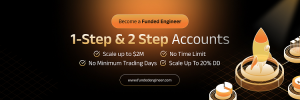86% of banks and brokers use more than one system to manage derivatives risk – report
A recent Acuiti study, conducted in partnership with Sterling Trading Tech, concluded that sell-side risk management is in need of an overhaul that consolidates systems and incorporates the increased importance of margin into risk calculations. Acuity surveyed participants from 55 banks and broker-dealers across the world and found that 86% of respondents use more than one […]

A recent Acuiti study, conducted in partnership with Sterling Trading Tech, concluded that sell-side risk management is in need of an overhaul that consolidates systems and incorporates the increased importance of margin into risk calculations.
Acuity surveyed participants from 55 banks and broker-dealers across the world and found that 86% of respondents use more than one system to manage risk across their derivatives business.
Ross Lancaster, head of research at Acuiti, said: “Legacy infrastructure has accumulated at sell-side firms over the years through acquisitions and siloed business lines. This has led to costly and burdensome operations that often fail to keep pace with client demands for cross-assert trading strategies and miss the operational efficiencies of more consolidation and real time oversight.”
Margin calls and legacy systems
Regulatory and market pressure is growing to monitor risk and margin on a real time basis, while fragmented legacy risk systems are hampering firms’ ability to respond to increased volatility across global markets.
Market volatility is forcing market makers to be more vigilant about collecting margin calls and to upgrade the existing infrastructure.
Acuiti outlined the key findings from the survey:
- 73% of respondents used between two and five risk systems, showing the burden and complexity of legacy infrastructure that firms have built up over the years;
- 64% of respondents take more than a week to implement risk and margin policy changes in their systems, timescales that are increasingly out of sync with fast changing market dynamics;
- Risk committee changes to parameters lag the real time demands of current day markets
78% or respondents believe that a more dynamic risk and margin policy would provide a competitive edge
Real time risk management has become essential for managing counterparty exposure, but legacy systems often lag these demands, the report continued, adding that existing infrastructure has often become so embedded in firms that even if they want to overhaul it, the operational challenges are too big.
“This will require imaginative solutions, that can onboard new risk models while also avoiding costly and drawn out integration periods”, the report argued.
Sterling Trading Tech caters to brokers
Sterling Trading Tech features a number of solutions for the full trade lifecycle, including EMS Trading Platforms, OMS and Risk and Margin solutions. The firm caters to brokers, clearing firms and investment managers.
In June, the firm announced the roll out of new advanced features that include a risk-based rules engine and the ability to trade fractional shares in order to offer broker-dealers and their traders more power and flexibility.
The Sterling OMS employs a REST API interface that integrates easily with users’ other existing systems, easily incorporating additional features and growing along with user demand.
Capable of handling increased volumes and order flow, the order management system now supports the trading of fractional shares as they become a common feature in the current trading environment, particularly in the retail trading segment.
The updated OMS joins a suite of equity, equity options and futures trading solutions as well as a real-time, cloud-based risk and margin system.









